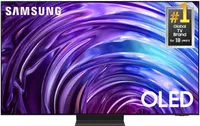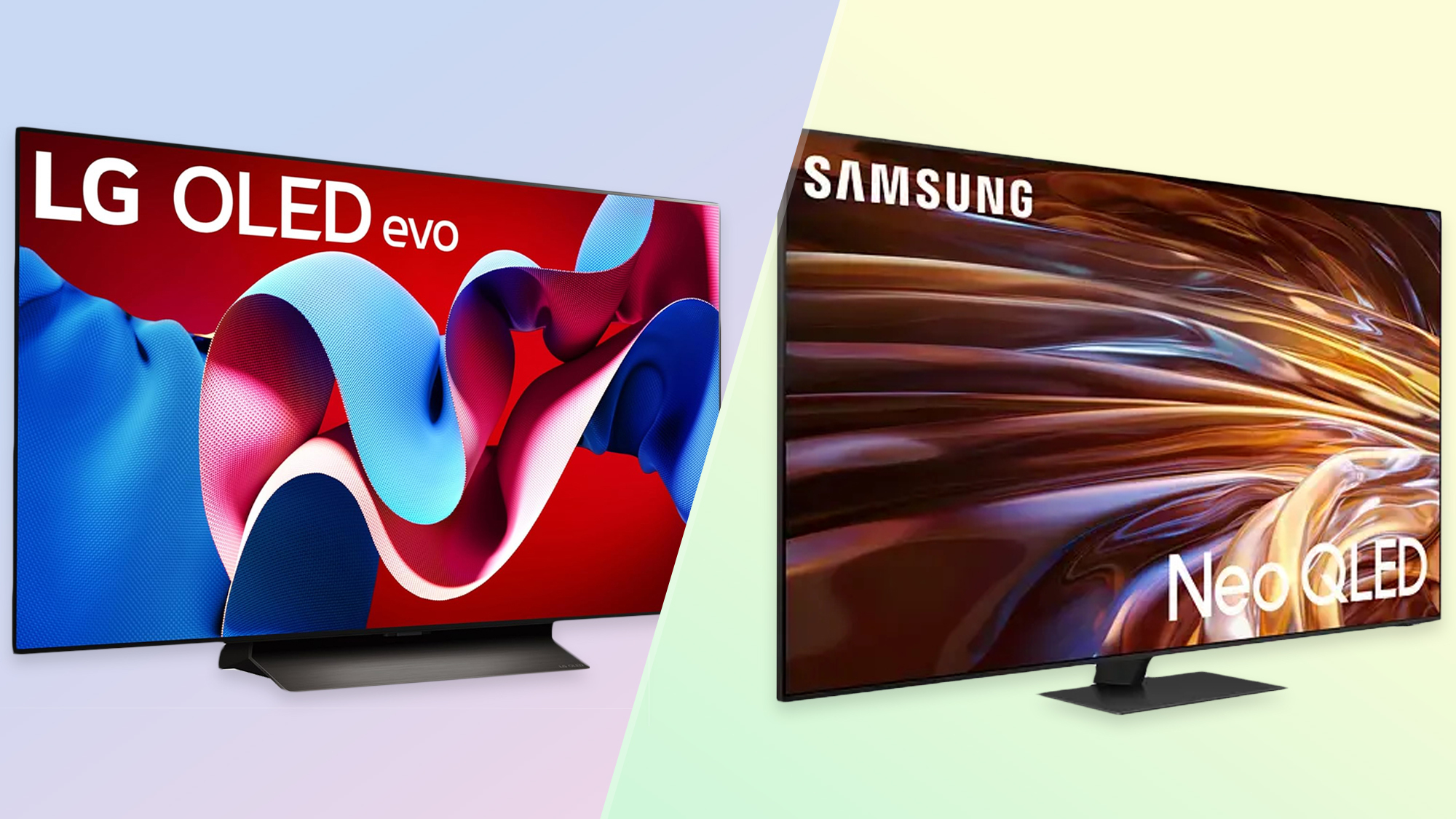
The TV industry is chock full of acronyms that can often bog down even the most knowledgeable of cinephiles when it comes to display technologies. But arguably the two most important you need to know when on the hunt for a new display are OLED TVs vs QLED TVs.
OLED and QLED TVs are two very different types of displays with their own pros and cons. Thus, the battle over which might be superior isn't so cut and dry. Although we at Tom's Guide might praise the best OLED TVs for their improved picture quality, QLEDs have a lot going for them in terms of brightness and they're often a whole lot cheaper, too.
To make matters more confusing, there are now more advanced technologies building upon these foundations in the form of QD-Mini-LED TVs and QD-OLED TVs. For example, TCL has a new series of "QD-Mini-LED" TVs and LG has announced that it's moving to a new four stack OLED panel structure. The variations and names might make your head spin, but we're here to narrow the field and best explain these technologies so you can pick the TV that's right for you.
Fancy an OLED TV? Read this first
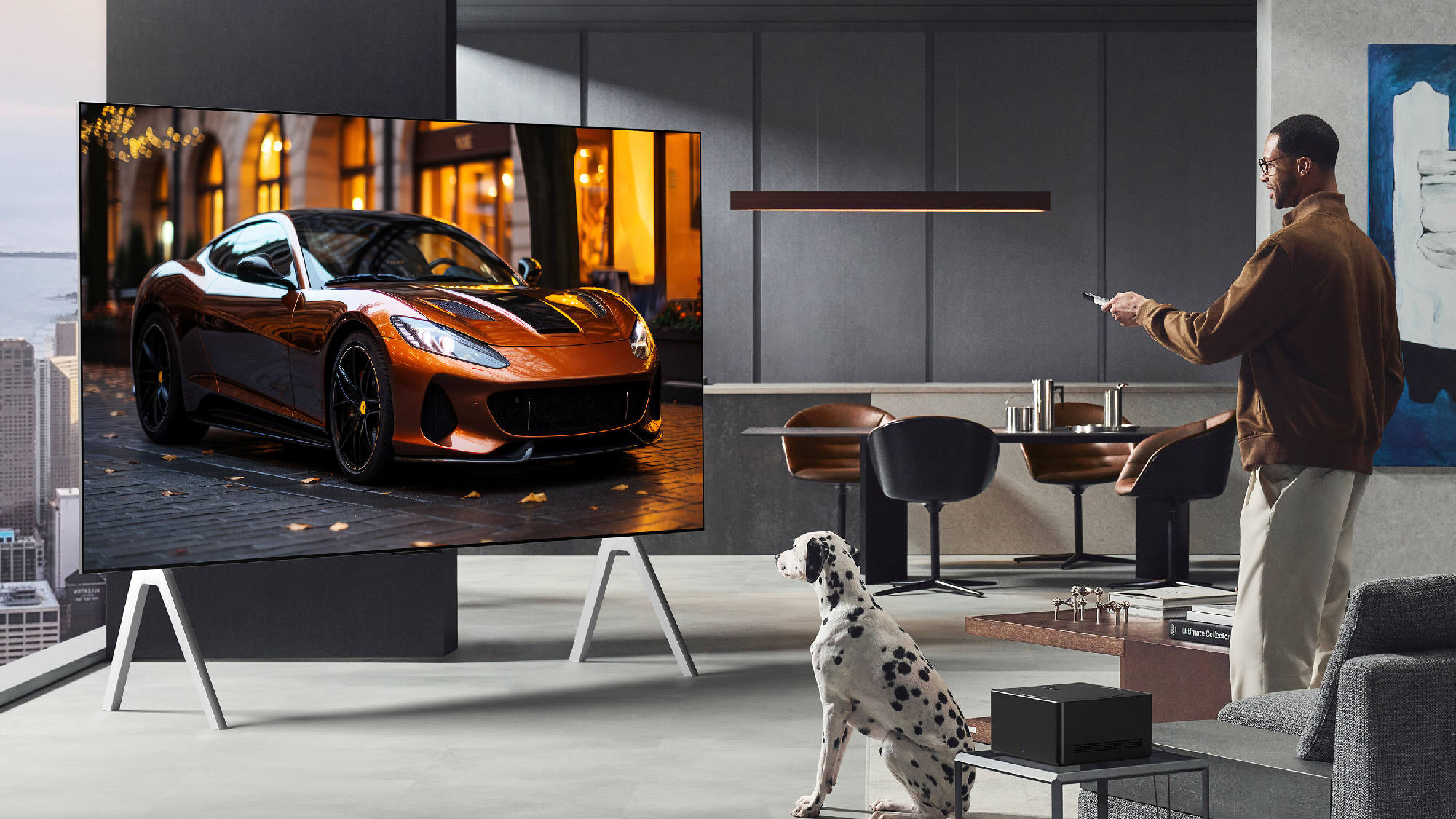
OLED, which stands for Organic Light-Emitting Diode, describes the panel structure of the TV. OLED TVs are screens with organic materials that make up the foundation of the TV panel. OLED TVs have self-emissive pixels that produce their own light. That's good for a number of reasons that we'll get into in a few minutes.
The exact structure of an OLED TV varies across manufacturers, but they essentially use organic films placed between two electrodes. When electricity passes through these layers, the electrons within release a special kind of energy: light. This light then bounces through the emissive layer with its organic molecules, turning light into a rainbow of varied colors, primarily blue, green, red, and yellow.
I stress emissive here because that's one of the fundamental differences between OLED and QLED TVs. OLEDs are emissive whereas QLEDs (and LCD TVs before them) are transmissive. OLED TVs use pixels that emit their own light, but QLED TVs must rely on LED backlighting to ignite the on-screen pixels.
The structure of these OLED panels varies across manufacturers. For instance, LG's WOLED panels use a stack of three emissive layers, whereas Samsung's QD-OLED panels use four. According to Ross Young, co-founder and CEO of Display Supply Chain Consultants (DSCC), both manufacturers are adding a new emissive layer to their OLED stacks this year, bringing LG's 2025 WOLED panels to four and Samsung's 2025 QD-OLED panels to five emissive layers.
Get instant access to breaking news, the hottest reviews, great deals and helpful tips.
The Samsung S95D OLED is an excellent 2024 model TV, and it's just dropped to a new all-time low price at Amazon. It packs a stunning OLED panel, excellent contrast and colors, and plenty of premium features perfect for gaming. Don't miss your chance to score this epic OLED for even less.
These changes are making newer OLED TVs much brighter, which tends to be where they fall flat. You might often see OLEDs touted as the best TV type in the space, but that's not entirely accurate. They offer the best black levels and contrasts at the cost of several leagues lower luminance than their QLED counterparts.
And, often neglected when discussing them, OLED screens offer better energy efficiency. That's because they use those previously mentioned organic materials and don't require the use of a backlight to produce light. They also give off much less heat and usually come very thin.
But OLEDs do suffer dramatically from burn-in. It's the big make-or-break-it issue that holds back many OLEDs, especially LG's. There are ways you can prevent OLED burn-in on your TV, but the reality is that OLEDs simply don't have the same life expectancy offered by QLEDs.
So, what's the big deal with those QLEDs, then?
QLEDs and quantum dots
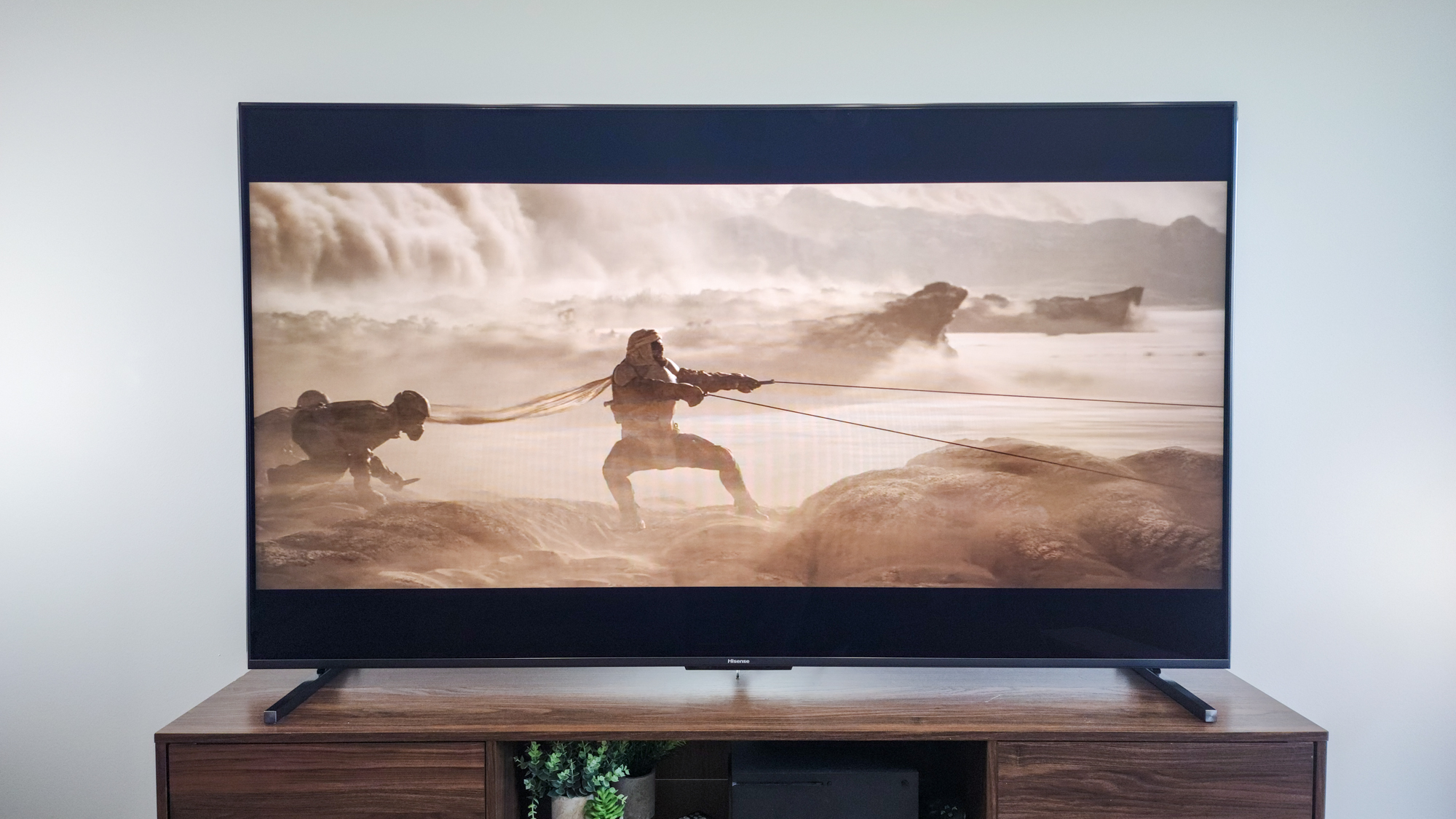
QLED, on the other hand, stands for Quantum Light-Emitting Diode — though, Samsung denotes them as "Quantum Dot LED TV." QLED TVs are, simply put, LED-LCD TVs with a internal film filled with (you guessed it) quantum dots.
It's these two technologies that are what separates QLEDs from OLEDs. QLED TVs need backlighting to light up these quantum dots and it's used in a variety of different ways. The main backlighting methods you need to know are Direct Full Array (FALD), Dual LED, and Mini-LED.
The latter backlighting type has become one of the most popular forms of QLED TV as Hisense and TCL make headway in the market against their biggest rival in Samsung, who was the first to introduce consumer-ready QLED TVs in 2017. Dual LED TVs are much less common than FALD and Mini-LED backlighting, but it can be found mostly in several models of Samsung's The Frame TV.
The Hisense U7N is a mid-range Mini-LED TV that specializes in bright, colorful HDR performance and gaming features. Its Mini-LED backlighting is especially nice to have at this price point, along with its support for 4K gaming at 120Hz or 144Hz.
Thanks to this backlighting, QLED TVs tend to have incredible brightness metrics. I'm talking upwards of 3,000 nits. Take, for instance, the Hisense U8N Mini-LED TV. Not only was it one of the highest-rated QLED models we reviewed last year, but it also sports a peak brightness of 3,397 nits in a 10% window in our testing.
The closest any OLED TV has come to that metric is the Samsung S95D OLED TV, which topped out at 1,777 nits in a 10% window. That just goes to show how powerful QLEDs are against OLEDs in terms of luminance. But a step even further, like price, shows why QLEDs are so popular right now. The 65-inch S95D currently goes for $2,299 (on sale) while the U8N, at the same configuration, goes for just $899 (on sale).
This is what makes QLEDs particularly appealing for those looking to get big-screen value. TVs are getting bigger, after all, and QLEDs in sizes over 65-inch tend to be pretty affordable in the face of those extra-premium OLEDs (and don't even get me started on Micro-LED TVs).
The future of QLED and OLED TVs
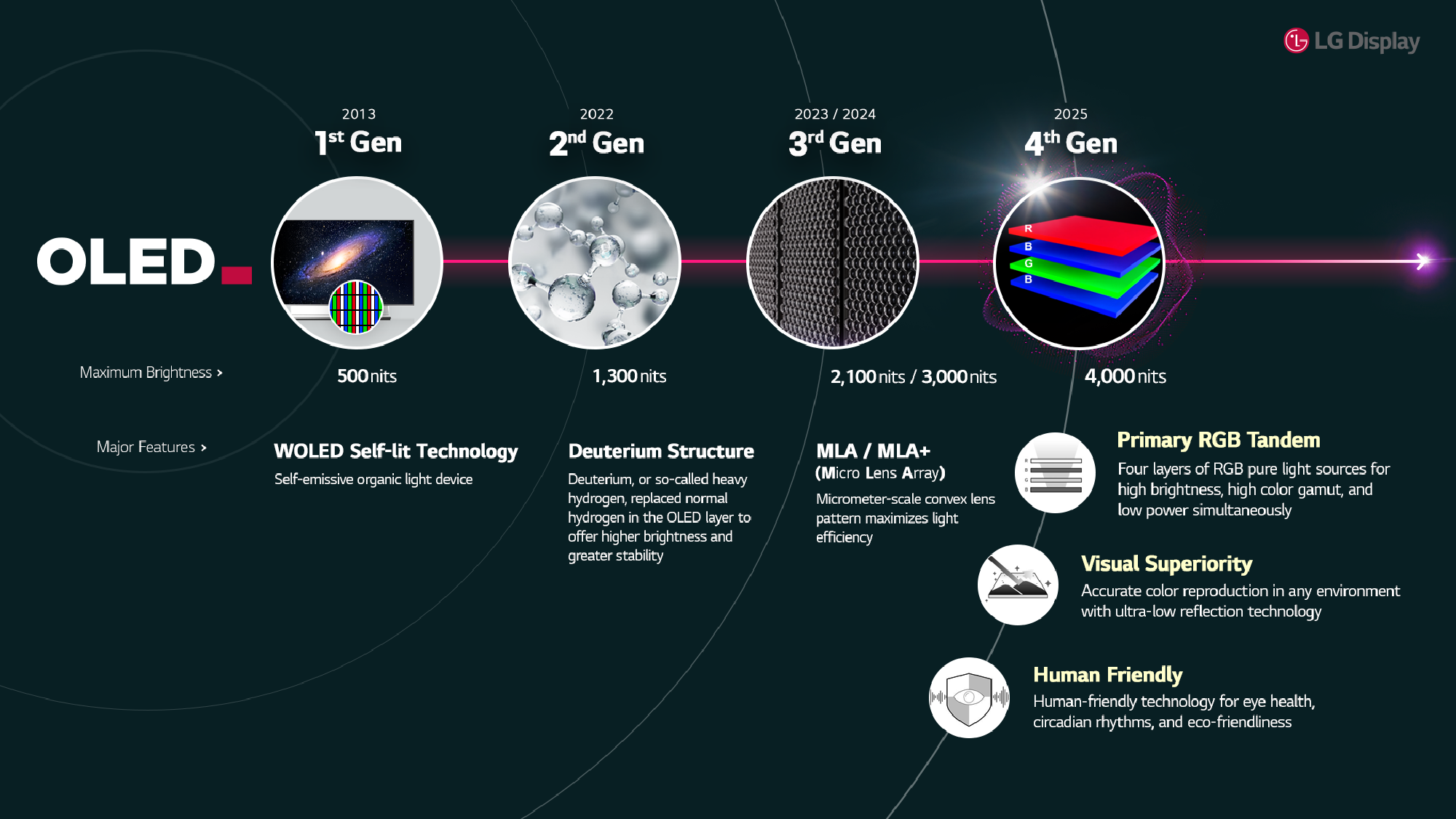
LG did a great job of detailing how its new WOLED OLED panel structure works on its 2025 TV lineup. Its four stack OLED technology uses four emissive layers stacked, from the bottom, blue, green, blue and red (B-G-B-R). Its previous OLED TVs, like the LG C4 OLED, uses a WOLED panel that stacks layers as blue, green/yellow green/red, and blue (B-GYG-R).
Essentially what this means is that its newest OLED TVs are bound to be some of its most color-accurate and colorful yet. Of course, LG's also touting some serious gains in brightness, claiming as much as 2,000 nits in a 10% window (specifically on its LG G5 OLED). That's totally bonkers, but not out of the question.
And it's not just LG that's changing up its OLED panel strategy as Samsung has invited some new additions to its QD-OLEDs, as well. It's adding an extra emissive layer to its OLEDs, bringing the count to five for improved brightness and color.
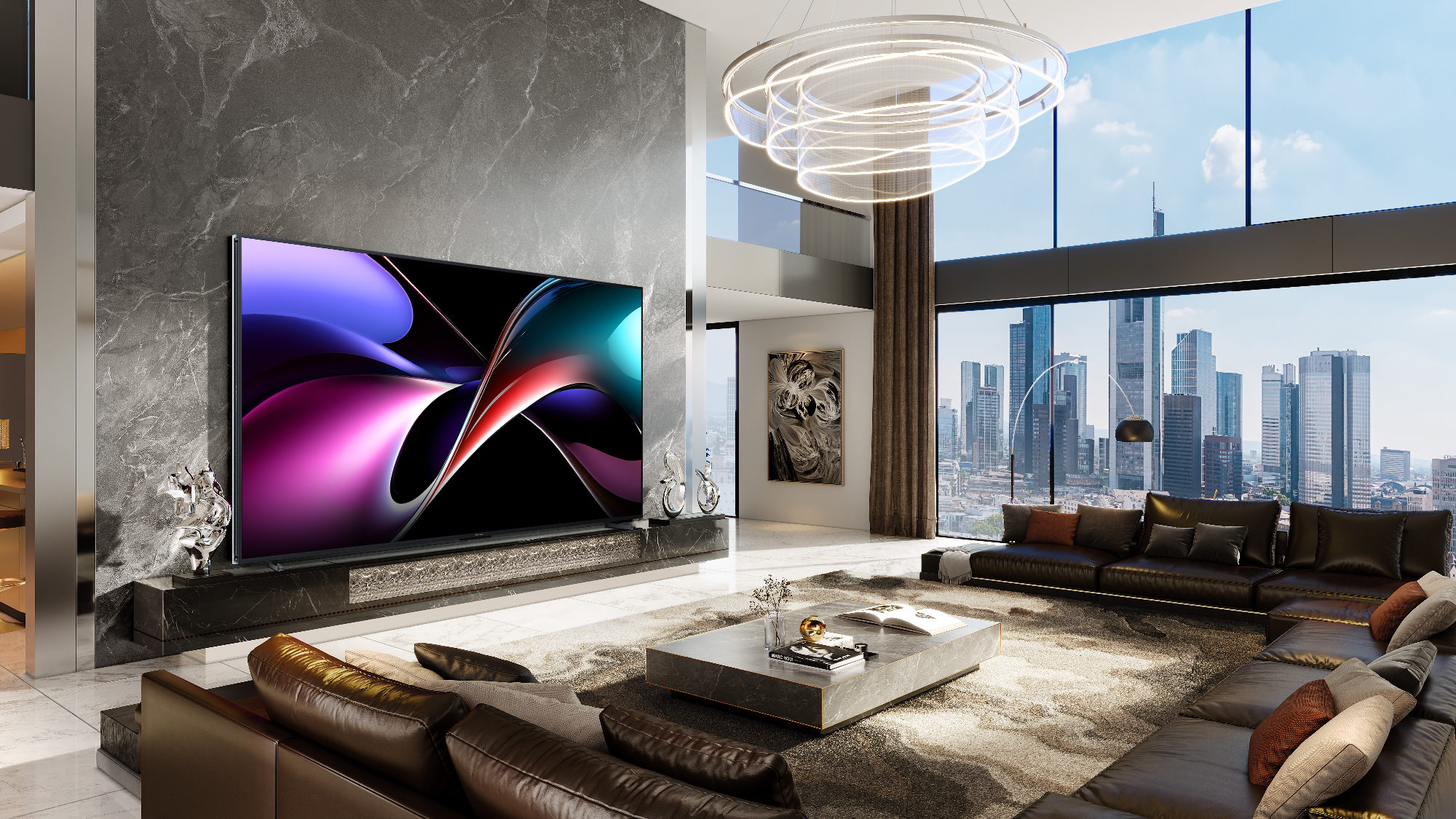
Both TCL and Hisense are changing the Mini-LED game. The former launched its QD-Mini-LED technology last year that aims to rival even OLED in picture quality. The new technology swaps in ultra-wide angle lenses and a 6-in-1 LED processor to deliver state-of-the-art performance, specifically targeting haloing and blooming in things like subtitles.
At CES 2025, Hisense unveiled its 116UX Mini-LED TV that utilizes a new TriChroma LED panel devised by Hisense that similarly aims to improve highlights and colors on future models. Thus far, it's only available on its 116UX, but will probably find its way onto several other models in due time.
OLED TVs vs QLED TVs: the bottom line
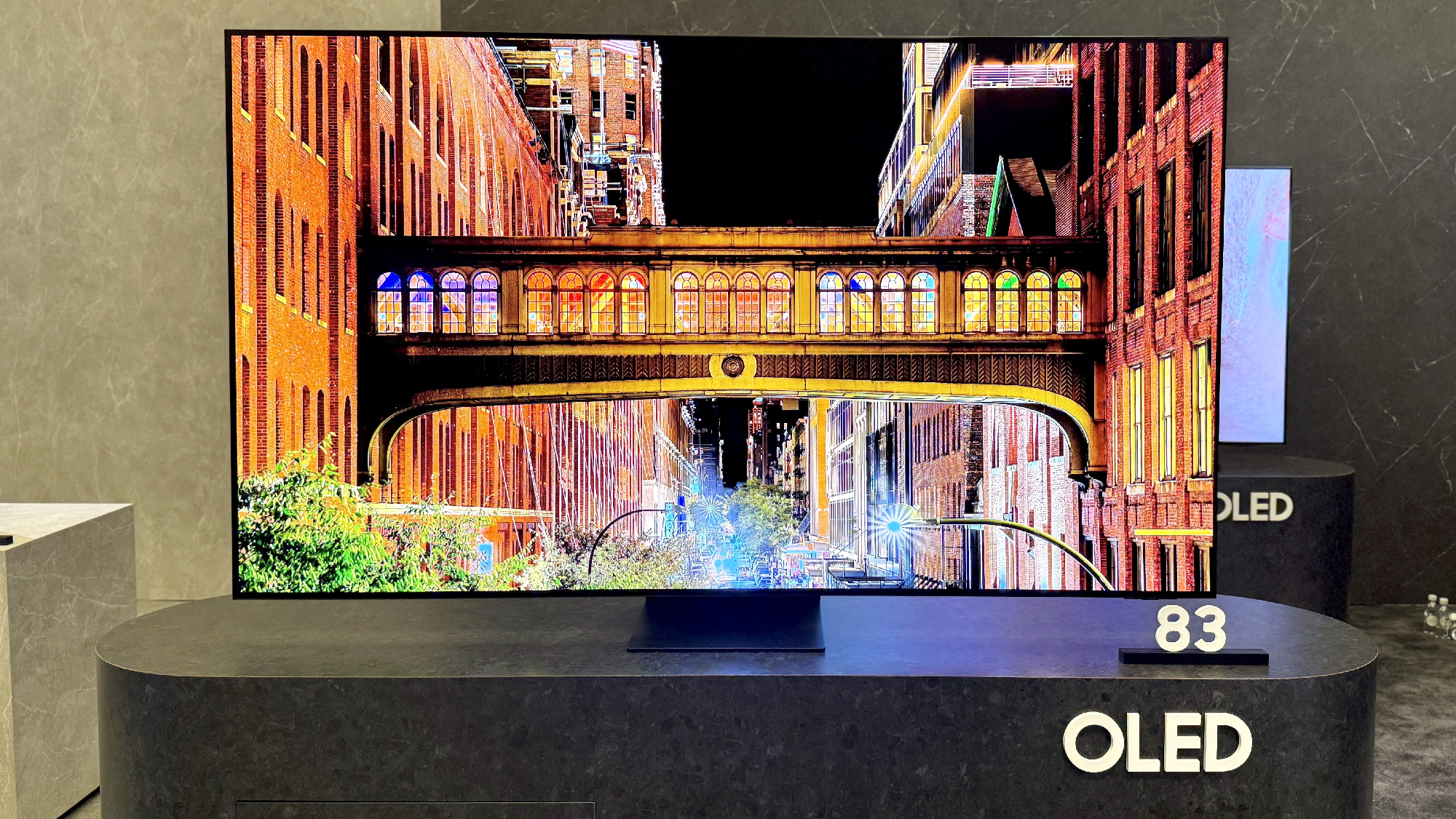
As shown here, both technologies have their own pros and cons. OLEDs tend to be slightly better in terms of black levels, but it's hard to beat those brightness metrics out of Samsung, Hisense and TCL QLED TVs. Both are ever-improving, as well, and might be better served for particular pastimes, like OLED being more beneficial for gamers whereas Mini-LED is the hot spot for HDR movies.
So, if you are on the hunt for a new TV, take stock in your living room situation or maybe underscore what you're getting the TV for specifically. Both technologies offer a superb TV viewing experience, but you'll want to match up the right technology to fit your space — and, most importantly, your budget.
More from Tom's Guide
- Shopping for a gaming TV? 3 to buy and 1 to skip
- Google TV vs. Android TV: What's the difference?
- This is the one thing to know before you buy a TV

Ryan Epps is a Staff Writer under the TV/AV section at Tom's Guide focusing on TVs and projectors. When not researching PHOLEDs and writing about the next major innovation in the projector space, he's consuming random anime from the 90's, playing Dark Souls 3 again, or reading yet another Haruki Murakami novel.
